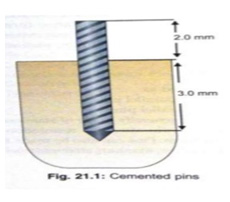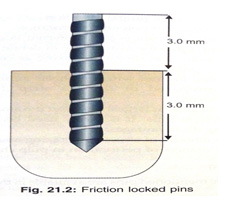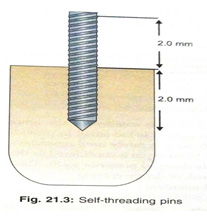- NEED HELP? CALL US NOW
- +919995411505
- [email protected]
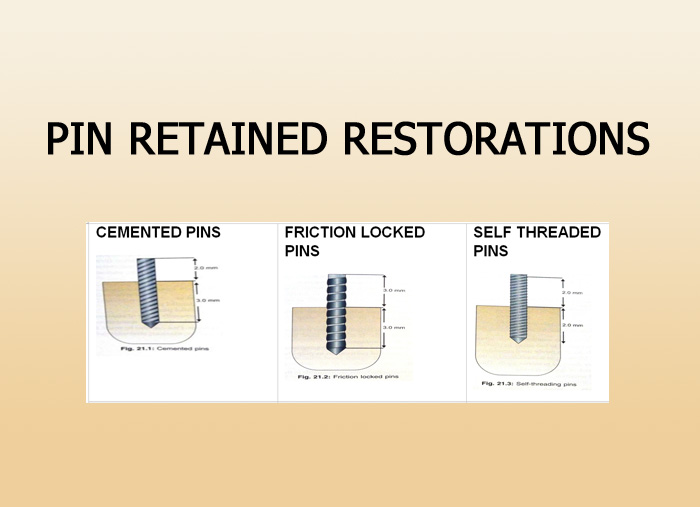
- Defined as any restoration which requires the placement of one or more pins in dentin to provide to adequate resistance and retention form to the restoration.
- It has a greater retention than those using boxes or bonding system.
ADVANTAGES
- Conservation of tooth structure
- Save time compared with cast restoration.
- Greater resistance and retention form
- Economics
DISADVANTAGES
- Dentinal micro fractures or crazing
- Lowered fractured resistance
- Strength of amalgam restoration is reduced
- Micro leakage around pin
- Perforations of pulp or ext. tooth structure.
- Difficulty to achieve proper contours
INDICATIONS
- Badly broken down or mutilated teeth.
- Questionable prognosis-Controlled restoration in tooth with questionable pulp or periodontal prognosis
- As a foundation under fixed restoration(core)
- Economics
- Age and health of the patient
CONTRAINDICATIONS
- Occlusal problems
- Esthetics-Rarely used in anterior teeth (Bonding Technique).
- Access difficulties-In class V horizontal groove in the gingival & occlusal aspect etc.
TYPES OF PINS
- Cemented pins
- Friction locked pins
- Self-threaded pins
| CEMENTED PINS | FRICTION LOCKED PINS | SELF THREADED PINS |
| Stainless steel with threads or serrations
|
Stainless steel with threads
|
Stainless steel/Titanium with gold plating
|
| Pin channel [0.020” to 0.32”] larger than pin size [0.018” to 0.30”] | Pin channel is 0.001” smaller than pin size | Pin channel is 0.015” to 0.004” smaller than pin size |
| Luted with standard luting agents | Taped into place with mallet | Placed by hand wrench or contra angle hand piece |
| Ease of placement | Pin placement is difficult | Pin placement is easy |
| Less internal stresses | Increased internal stress | Increased internal stresses |
| Least retentive | 2-3 times more retentive than cemented pins | 5-6 times more retentive than friction locked pins |
SELF THREADED PINS – THREAD MATE SYSTEM

| REGULAR | MINIM | MINIKIN | MINUTA |
|
|
|
|
PIN DESIGNS

ADVANTAGES OF TMS PINS
- Versatile design
- Wide range of pin sizes
- Color coding allows ease of use
- Gold plating eliminates corrosion
- Good retention
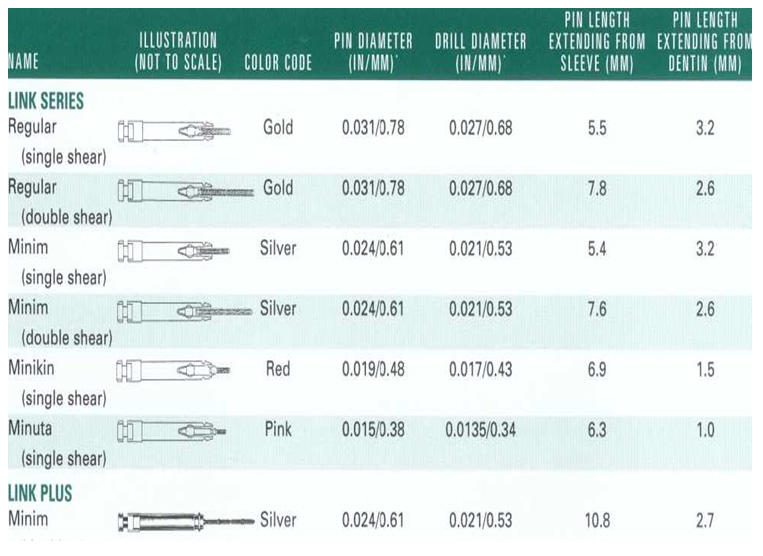
FACTORS AFFECTING THE RETENTION OF THE PIN IN DENTIN AND AMALGAM
- Orientation, number and diameter
-Non-parallel pin – ↑ retention
-Bending of pin – not desirable
Interfere with condensation of amalgam
Weaker pin, fractured dentin
- ↑ no. of pin – ↑ retention
↑ crazing & fracture
↓ Amount of dentin available
↓ Amalgam strength
- ↑ diameter of pin – ↑ retention
↑ No:, diameter, depth – danger of perforation on pulp or external tooth surface
Interfere with condensation of amalgams and adaptations to the pins.
↓ Amount of dentin available
↓ Amalgam strength
- Extension into dentin & amalgam
Retention is not increased when depth of the pin increases in 2mm in depth – fracture of dentin
If 2mm increase in amalgam-fracture of amalgam.
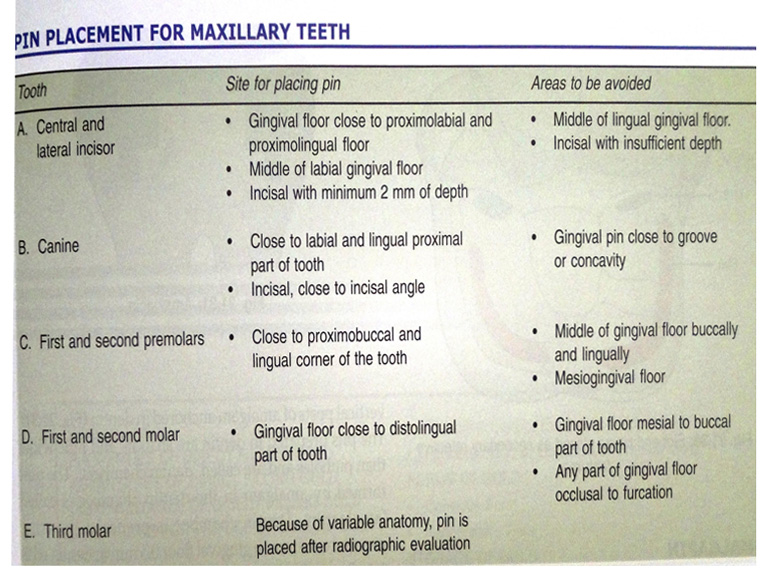

TECHNIQUES FOR INSERTING PINS
- Pin channel preparations
- Cemented pin technique
- Threaded pin technique
- Friction grip pin technique
Failure of the pin retained restorations
- If the failure is within the restoration, the restoration can fracture.
- If the failure is at the interface between the pin and the restorative material, the pin can pull out of the restorative material.
- If the failure is within the pin, the pin can fracture when stressed beyond its ultimate tensile strength.
- If the failure is at the interface between the pins and the dentin, the pin can pull out of the dentin.
- Within the dentin, the dentin can fracture.
Click here to view QA and Description for Pin Retained Restorations

